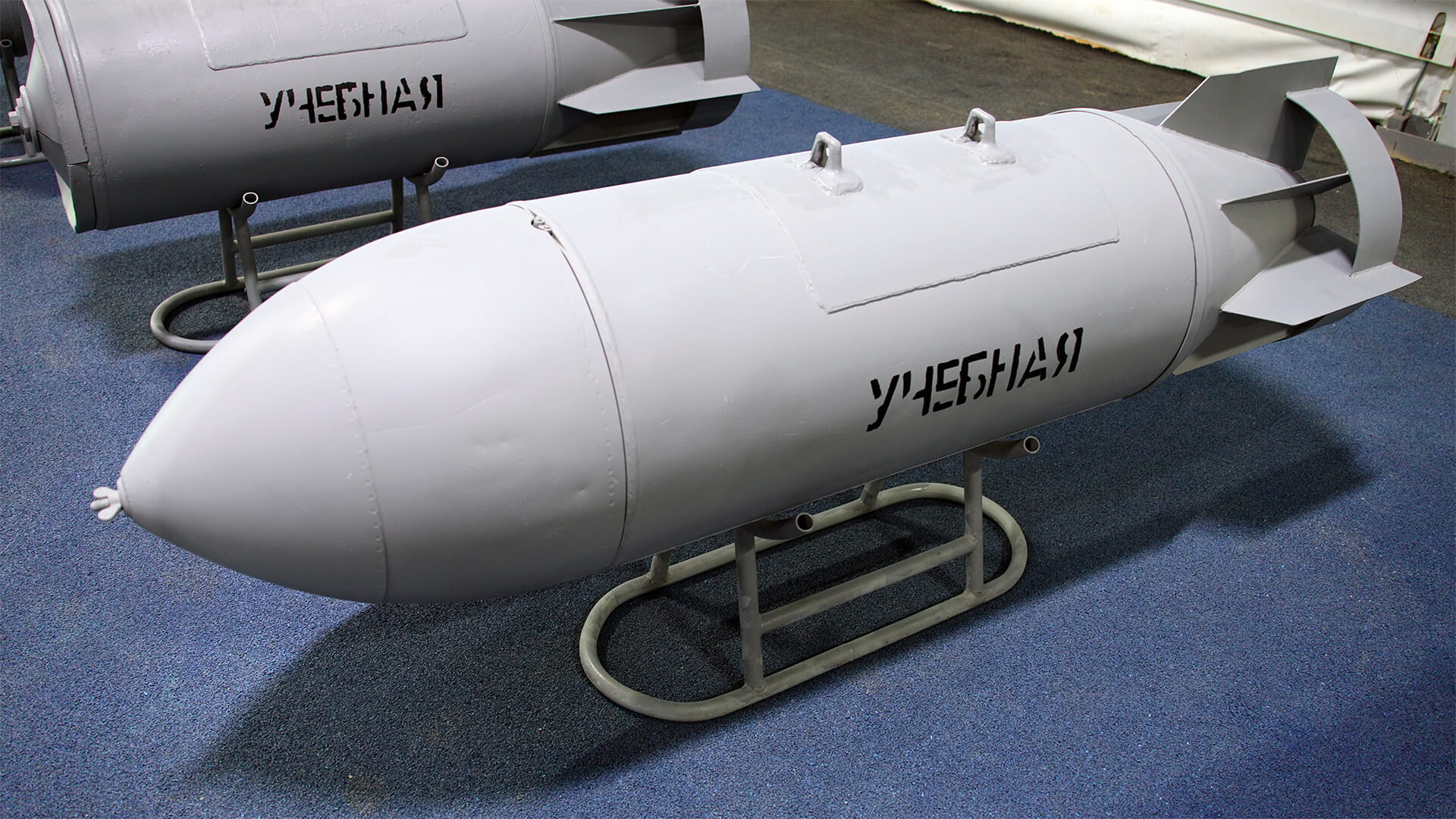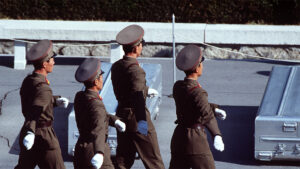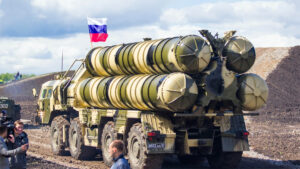We’ve seen both sides of the conflict in Ukraine adopting and adapting new ways of fighting. While Ukraine has innovated with drones and satellite tech, Russia has modified its large FAB-1500 dumb bombs into glide bombs.
Russia has always fought (and won) wars through sheer numbers and volume, but the introduction of precision-guided systems is a new blend of innovative tech and the traditional Russian numbers strategy. Since Russia has so many FAB-1500 dumb bombs that can be upgraded, they’ll have a multi-decade supply of glide bombs.
This shift in Russian strategy should be setting off alarms for the rest of the world. With such a substantial transformation in Russian military power, global military strategies will need to be reevaluated and revised.
Here at Zeihan On Geopolitics we select a single charity to sponsor. We have two criteria:
First, we look across the world and use our skill sets to identify where the needs are most acute. Second, we look for an institution with preexisting networks for both materials gathering and aid distribution. That way we know every cent of our donation is not simply going directly to where help is needed most, but our donations serve as a force multiplier for a system already in existence. Then we give what we can.
Today, our chosen charity is a group called Medshare, which provides emergency medical services to communities in need, with a very heavy emphasis on locations facing acute crises. Medshare operates right in the thick of it. Until future notice, every cent we earn from every book we sell in every format through every retailer is going to Medshare’s Ukraine fund.
And then there’s you.
Our newsletters and videologues are not only free, they will always be free. We also will never share your contact information with anyone. All we ask is that if you find one of our releases in any way useful, that you make a donation to Medshare. Over one third of Ukraine’s pre-war population has either been forced from their homes, kidnapped and shipped to Russia, or is trying to survive in occupied lands. This is our way to help who we can. Please, join us.
TranscripT
Hey Everyone. Peter Zeihan here coming to you from Colorado, where we are having a 55 degree day in between snowstorms. We’re going to talk about some of the technological evolutions we’re seeing in the Ukraine war, specifically on the Russian side. I mean, the Ukrainians have got a lot of street cred that they have earned for new and innovative tactics and applying new technologies like drones and civilian satellite information to the targeting systems.
But the Russians haven’t been just sitting there taking it. They’ve been innovating and applying it across their entire post-Soviet arsenal. Or maybe more, I should say, Soviet arsenal and the weapons system in play is something called the Fab 1500, which is a 1500 kilo dead drop bomb that they’re now putting flight kits on that allow it to become a glide bomb.
Think of it as a very low tech missile that if you drop it from a sufficient height, can glide up to something like 50 kilometers or more. Based on circumstances in the battle that DEFCON that resolved back in February, the Russians used over 100 of these a day at some point, and the payloads end up making a bomb crater that in many cases is more than 50 feet across.
So just a huge amount of explosive developed with relative precision. The Russians are saying they have an accuracy rate of five meters. Let’s take them at their word or if you want to say they’re off by an order of magnitude 50 meters. Still, the concussive explosion of that kind of bomb is just devastating to any sort of emplacement, defensive installation.
And certainly troops. And we’re applying this now to the Soviet arsenal. One of the things to keep in mind. Well, actually, let me go back. So if this sounds familiar, putting like a glide kit on a dumb bomb, that’s because we’ve seen this before. Now, for those of you who are under age 45, think back to Desert Storm, where the United States was at war in Iraq the first time.
And we had something called the JDAM, the Joint Direct Attack Munition, where we took our Cold War arsenal of dumb bombs and put flight kits like these on them that allowed for accurate attacks very, very cheap, measured in the single or double digits of thousands per bomb for the adjustment, as opposed to, say, millions per missile. And it converted something that we had just an extreme inventory that allowed us to basically coast on that technology for the next 20, 25 years, a very significant development that transformed American air power.
The Russians are now on the early stages of doing that themselves and being Russian Soviet. They have a lot more of these in inventory than we ever did. And while their dud rate might be a lot higher than ours, you’re still talking about tens of thousands of bombs that they can apply this to. And they’re only in the very early days of it.
So if all they do is upgrade their dumb bombs, they have probably at current burn rates, 20 to 25 years of supplies of these sorts of things. And none of the countries that border Russia have anything like this. They may have had a few supplementary weapons that were left over from the Soviet period, but almost the entirety of the Air Force was concentrated into Russia proper.
And that’s where the industrial plant is to do the modifications. So there have been any number of reasons to think that it’s the Russians who at the end of the day will rely on numbers and sheer weight to win this war and prosecute the next one and the transformation of what has been to this point, a relatively useless weapon, which is just a dumb drop bomb with not a lot of accuracy.
And there’s something that’s more akin to what the United States developed back in the late 1980s. Now, that’s a very, very, very significant development. And the only way that the Ukrainians can really counter this is by getting a functional air force that can strike across the border and hit Russian aircraft before they can drop the weapons in the first place.
And even in the most aggressive estimates that I’ve seen for the transfer of things like F-16s to Ukraine, there just aren’t enough of them in order to make that sort of impact on a broad scale. So this is something that is going to reshape the battle space signature effectively until and unless the Ukrainians can disrupt the ground logistical systems that are supporting the Russian forces.
And even if the Kerch Bridge Group coach go down in Crimea goes from a springboard for Russian power to a massive sandbag that doesn’t affect the eastern front. So we’re looking at here at probably the most significant transformation in Russian military power in the last 30 years. And it’s now being applied to a hot war zone. This is far more significant than what the Russians have been doing with artillery strikes in urban centers or the Shaheed drones from Iran, which are basically war crimes of choice.
Was this something that has a very real, very deep, very lasting military implication that will affect the entire front line, especially in the east? And there is no good, clean, simple counter? one quick addendum in order to put this into a deeper context. The Soviets slash Russians have never, ever won a war based on technology. It’s always been sheer weight of numbers, and this conflict is no different from the ones that came before in that regard.
The reason why the United States fights the way it does is we’ve always been on the wrong continent for most of our wars. And so no matter where we go, we’re always going be outnumbered. So it’s all about precision bringing force in volume, but applying it precisely. So that’s why we’re in precision guided munitions and mid and long range missiles, air power guided artillery, all that good stuff.
We’re never going to be able to fight on the numbers, so we have to have a multiplier. It’s two very different design philosophies and two very different military strategies that are defined by the cultures in question and where they tend to fight. We tend to fight at a considerable remove. The Russians have always fought very close to where they actually live.
What is in play here with this new weapon system or the modified 1500, is applying a little bit of the American approach to precision, to the Russian approach for mass. So, for example, the the JDAMs, for the most part, the United States applies those to our old stock of £500 bombs, very effective the Soviets, because it was always about mass, don’t use £500 bombs.
It was 500 kilo bombs or in the case of the 1500, 1500 kilo bombs, very different scale. And if you can take a little bit of the American precision, even if it’s circa 1987 and apply it to the scale that the Russians can produce, then you have a very different war fighting capability, not just in Ukraine, but wherever the Russians go from now on.
And that makes for a very different regional and even global rival that will force the U.S. military into a ground up reassessment of everything that it does.







